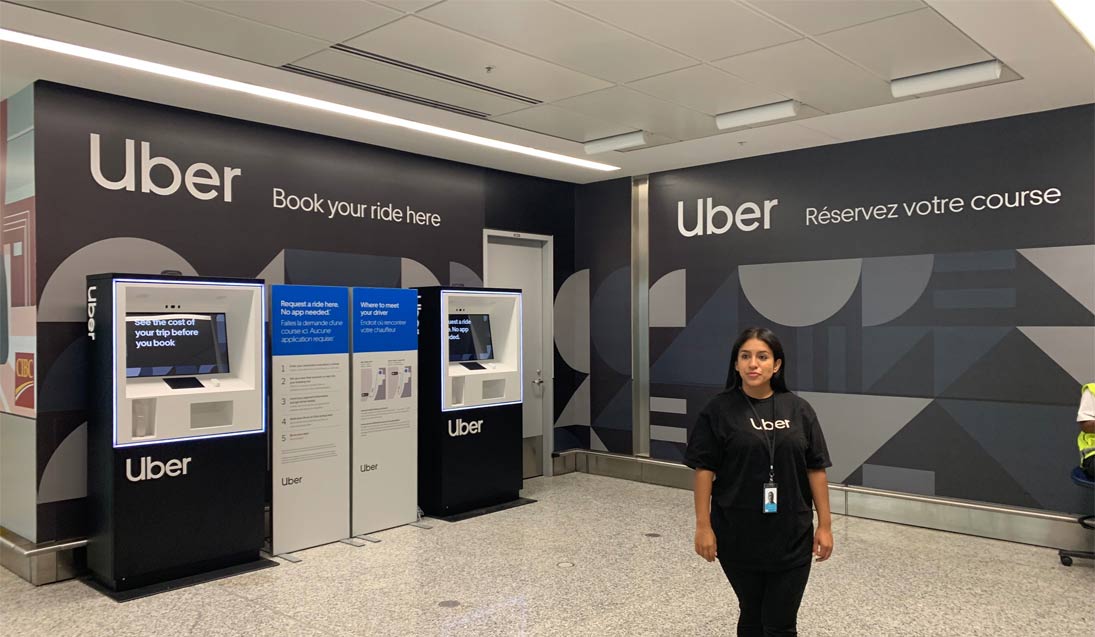Uber is considered one of the pioneers in the ride-hailing business. Fast forward to 2019, Uber is having an array of competitors in the billions of dollar market.
Because innovation and introducing something new can give companies the competitive edge, Uber starts allowing people to book a ride without using its app, using kiosks that are initially introduced at Toronto’s Pearson International Airport.
According to the company, this should give travelers the convenience in getting a ride, while they experience difficulties in using their smartphone, like for example, because of the language barrier, running out of battery, or other issues.
The 'Uber Rider Kiosks' comes with a 32" LCD display at the top, powered by a small contained Dell PC which has an Electron app running. At the bottom, there is a 2019 10.5" iPad Air tablet. And on the right-hand side of the device, there is a place to swipe chip credit card reader.
Built into the kiosk are also a handset, speakers, camera, document tray and led light strip around bezel. Most of the hardware used is similar to what are used in Uber 'Greenlight' hubs, where Uber on-boards its drivers.

According to Anurag Agarwalla, head of Uber’s innovation team for its technology services group, in a blog post:
"That attribute, along with a live support representative, brings in a human element we wanted to highlight."
According to Jon Kantrowitz, the design lead for the kiosks:
Not sure how to get to your final destination? Avoid unlicensed transportation, also known as “scoopers.” @Uber and @Lyft are now available as part of a ride-sharing pilot at Pearson to ensure you take #therightride. https://t.co/VDfPLPdg8a pic.twitter.com/EDC4JAKQHX
— Toronto Pearson (@TorontoPearson) August 22, 2019
Toronto was chosen for the trial was because Uber had to choose a city and airport with a good relationship with the company. The infrastructure and placement also had to be decent, and the space rental had to be cost-effective.
This is a little surprising that Toronto is the first place to get these kiosks, since it wasn't too long ago that Uber pickups weren't even allowed at Pearson.
Similarly, ride-hailing service Gojek from Indonesia was finally allowed to operate around the Soekarno-Hatta International Airport, after years of cat-and-mouse games between drivers and the officials.